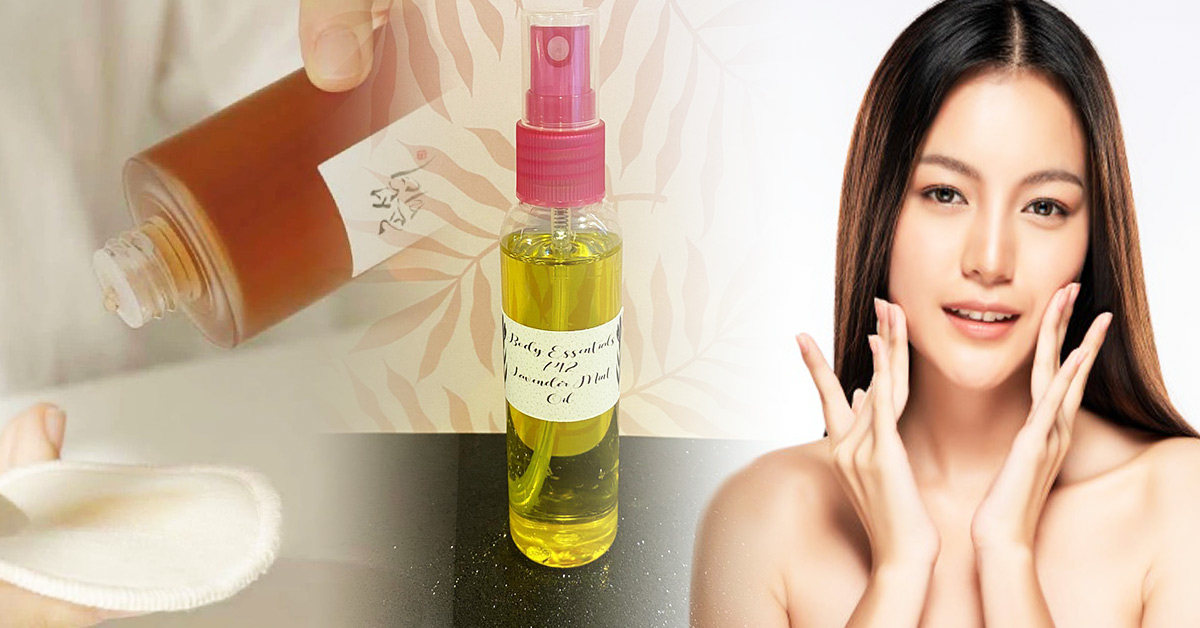9 Ways How To Use Tea Tree Oil For Hyperpigmentation Scars

Acne itself is embarrassing. Regrettably, as soon as it heals, it leaves scars behind, that are extremely painful to clear away. Because of this we always worried about this black spots or hyperpigmentation scars. “Read hear Tea Tree Oil For Hyperpigmentation Scars”.
#: Tea Tree Essential Oil
Tea tree oil belongs to the most actively used essential oils in the world. Like the plant from which it is extracted – Melaleuca, this oil has become a true fragrant legend.
The aboriginal experience has been fully confirmed by modern aromatherapy practice.
The authority of aromatase derived from outlandish wood is untouchable. Like millennia ago, it is used to heal and protect against insects, effectively treating wounds, all sorts of infections, and even burns.
The first high-profile fame for light oil extracted from Melaleuca came during World War II. It became the main medical antiseptic and precursor to antibiotics. Production of this oil today is scattered all over the world. Still, despite everything, pure essential oil of the tea tree is considered oil, obtained in Australia and meeting Australian standards.
There are loads of commercial lotions that declare they can remove scars and dark spots, but they are high-priced and typically ineffective, and it contains chemical compounds that can again additional injury to the skin.
As an alternative to commercial lotions, use of tea tree oil can be the best option as tea tree oil is organic, inexpensive, and powerful, and I am here about to inform you precisely how to use tea tree oil to get rid of acne scars naturally within days.
1) Is It Safe To Use Tea Tree Oil For Hyperpigmentation Scars?
- Research signifies that tea tree oil lightens hyperpigmentation, acne scars and scars from injuries without any side effects.
- Tea tree oil has a wide spectrum of action, it is the strongest antiseptic because Tea tree oil is antiviral, antibacterial and antifungal properties.
- That is why Tea tree oil is often used as a natural remedy for preventing infections, healing small wounds, blisters, acne scars, and burns.
- Tea tree oil has Terpene–4, an antimicrobial element that kills the bacteria which induce acne.
- Tea tree oil heals wounded skin.
- It moisturizes and restores the skin’s organic oil stability.
- Tea tree oil penetrates deep into pores to clear away harmful toxins and reduce the clogging that triggers acne and lightens the scars.
- Tea tree oil decreases irritation and removes dead skin cells to decrease scars.
2) Things To Remember Before Using Tea Tree Oil
- Applying tea tree oil, you need to carefully monitor what concentration it has. For example, A 5% solution of essential oil is good for treating acne, and 10% will cope with the problem of sweaty feet.
- It should be remembered that before starting treatment, apply a small amount of tea tree oil to a small area of the skin to check the body’s response to it.
- If redness, burning or other skin irritation is observed, the oil must be diluted or not used at all.
3) Characteristics
As a therapeutic remedy, the natives used shredded leaves Melaleuca, not by accident: it is in the leaves accumulates the most significant amount of nutrients and essential oils, and it is from them and extracts the legendary and well-known essential oil.
It is fluid, liquid, and transparent without any color or with a light salad hue. Still, it has a uniquely strong aroma, which is easy to “overdo.”
The smell of the tea tree is not warm but cold, refreshing, sharp, with strong bitter, spicy, and tart notes, which are based on a woody aroma. The first to inhale the oil is caught spicy nuances of wet freshly cut wood, behind them are sharp, bitter, and cold nuances.
The basis of the smell is fruit tones, seemingly inappropriate in this wood oil. It is they who give the aroma of this aromatase a mystery and some strangeness.
Tea tree is not the essential oil that is actively used in perfume mixtures, because it is combined only with low woody and spicy aromas, such as pine, bergamot, nutmeg, cloves, bitter orange, rosewood, geranium, cinnamon, and lavender
4) Tea Tree Oil With Virgin Olive Oil

Olive oil purifies pores and moisturizes skin.
#: Ingredients:-
- Two drops of tea tree oil
- 1 Tbsp of virgin olive oil
- 2-3 Pieces of Tissue paper
#: How To Make:-
Mix two drops of tea tree oil with one tablespoon of additional virgin olive oil. Apply mixture to the affected area on your skin and leave it for 10 minutes. Wipe off with tissues.
#: How Often You Can Use:-
You can repeat this process daily to see significant results within 7 days.
5) Unique Properties Of Tea Tree Oil
The use of oil in medicine, both unconventional and official (unparalleled among other essential oils), is based on a unique combination of antibacterial, antiviral and antifungal properties with powerful immunostimulating abilities,
Thanks to this, the tea tree is actually and today regarded as a natural complex and harmless antibiotic-immunostimulators.
Tea tree allows you to cope with infections of all etymologists and recover from debilitating and chronic diseases. It is among all means of aromatherapy most often used for infections in children, colds, flu, in particular in epidemics.
Healing, soothing, and decontaminating properties of the tea tree allow it to be used for first aid in the treatment of serious injuries, injuries, burns. With this essential oil, you can cope with many dental problems – inflammation, unpleasant odors, plaque.
But this is not all the “talents” of the fantastic aromatase. It stops the symptoms of food poisoning, optimizes the stomach and intestine’s work, eliminates cystitis and inflammation of the urinary tract, has an antibacterial effect on the genital mucosa, regulates secretion, and even is a natural radioprotector and anticarcinogen.
6) Diluted Tea Tree Oil For Acne Scars
#: Ingredients:-
- ½ Teaspoon of tea tree oil
- Two teaspoons of water
#: How To Make:-
Mix ½ teaspoon of tea tree oil with two teaspoons of water. Apply to the affected area on your skin and leave it to 3-4 hours or overnight. Rinse with water and pat dry with towel or tissue paper, Then Apply organic moisturizer like natural coconut oil.
#: How Often You Can Use:-
Repeat each day to get rid of acne scars.
#: How Long Does Tea Tree Oil Take To Work On Acne ?
It depends on skin types, and also varies from person to person, but you can see significant changes or improvement within 2-3 weeks.
7) Skin And Hair Care Application
In cosmetics, the emphasis when using a tea tree is also made on its relieving inflammation and antibacterial properties. Most often, it is used in specialized, narrowly focused trains.
Thus, with the help of this aromatase, remove chronic and acute inflammation of the epidermis, treat rashes, herpes, dermatitis of all origins, eczema, and congestive inflammation.
In addition to eliminating the itching, redness, and irritations that invariably accompany skin diseases, tea tree essential oil also reduces puffiness. Thanks to dynamic changes in the epidermis structure, this aroma oil qualitatively changes the skin’s relief. It restores it after damage, thickening, and tumors, including helping to get rid of warts.
- For daily care tea tree is used only for problematic and oily skin.
- It is one of the most effective essential oils to strengthen hair and restore its structure, as well as the primary aroma oil to fight dander and psoriasis.
- Tea tree can be used to improve the antibacterial properties of intimate cosmetics.
When the premises are flavored, tea tree oil decontaminates the air, acting as an excellent prevention of the spread of viruses and infections. Tea oil also soothes the skin at the site of the insect bite.
8) Impact On The Emotional Sphere
In the emotional sphere, tea oil can be called a real “antiseptic”: it helps to eliminate misconceptions, obsessions, fears, panic, and hysterical reactions. This fragrance is suitable for those who want to gain more autonomy and establish themselves in their self-sufficiency; it promotes rational decisions, bold actions, and performance.
Tea tree helps to resist negative influences and aggression, has a protective effect. Also, the tea tree is an oil that activates thought processes and perceptions that stimulate memory.
9) Dosage
This oil does not irritate even when applied to sensitive skin in an undiluted form, which significantly expands the range of its application. The only contraindication for the use of tea oil is individual intolerance. It is undesirable to use it for children under three years of age.
The intense smell of the tea tree can cause slight dizziness, with overdoses – nausea and digestive disorders, so never independently increase the dosage even by one drop.
- Aroma Vanna can be taken for no more than 10 minutes, adding up to 10 drops of tea tree or four drops of tea tree and lavender into the water.
- For compresses, applications, and bandages, washing wounds on a glass of warm water add no more than four drops of tea tree oil, for rinses – no more than 10.
- Hot inhalation strains spend no more than 10 minutes inhaling steam from the water, adding five drops of tea tree aroma oil or two drops of tea tree and lemon oils.
- For massage on each tablespoon of oil-basics, add up to 8 drops of oil.
- Inside the tea tree, take one drop together with vegetable oil and bread no more than two times a day.
- For aroma lamp enough to dig up five drops of aroma oil, for individual pendants – 1 or 2 drops.
- In the means of intimate hygiene, add five drops of essential oil of the tea tree, the same is used for douching (for one time).
10) Conclusion
In conclusion, Tea Tree Oil emerges as a formidable ally in the battle against hyperpigmentation. Its natural properties not only combat uneven skin tone but also promote a healthier complexion.
The versatility of Tea Tree Oil, coupled with its ability to soothe and rejuvenate the skin, makes it a standout solution for those seeking a natural remedy. Embrace the power of Tea Tree Oil to unveil a brighter, more radiant you. Say goodbye to hyperpigmentation and hello to naturally beautiful skin.
11) FAQs About Tea Tree Oil for Hyperpigmentation:
Q.1: Is Tea Tree Oil safe for all skin types?
A: Generally, Tea Tree Oil is safe, but it’s advisable to do a patch test, especially for sensitive skin.
Q.2: How often should I use Tea Tree Oil for hyperpigmentation?
A: Start with once a day and monitor your skin’s response. Adjust frequency based on individual tolerance.
Q.3: Can Tea Tree Oil replace other hyperpigmentation treatments?
A: It can be a beneficial addition, but consult a dermatologist for a comprehensive approach.
Q.4: How long does it take to see results?
A: Results vary, but consistent use may show improvement within a few weeks.
Q.5: Are there any side effects of using Tea Tree Oil on hyperpigmented skin?
A: Some may experience mild irritation; discontinue use if severe reactions occur.
